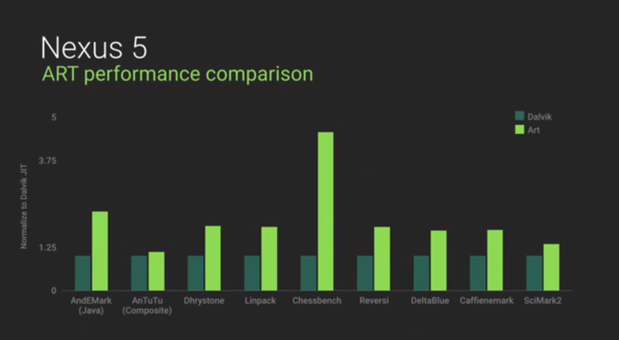Battery life is a really big deal. Recent surveys from IDC The Guardian suggest that it’s the number one concern among smartphone buyers. all hate it when our phone doesn’t make it through the day, but our buying habits show we’re not willing to lug around thick, heavy, costly phones with bigger batteries. ‘ve provided tips on how to boost your phone’s battery life, but to make a serious difference, we need deep-down changes to the Android operating system. Android aims to give us that big battery life boost through a series of enhancements calls “oject Volta.”
Similar to oject Butter (Android 4.1’s improvements to get everything running at 60 frames per second) oject Svelte (Android 4.4’s push to make Android run well on devices with only 512MB of RAM), oject Volta is not just a singular change. It’s a blanket term for a suite of enhancements that aim to significantly boost your smartphone’s battery life.
Battery Historian

Battery Historian is a tool to track visualize battery use.
As part of building Android created a tool called Battery Historian that allows developers to visualize exactly what’s using your phone’s battery, to what extent, at what time. This helped the company make a bunch of under-the-hood changes to Android that lowers its overall battery consumption, it will help developers profile the energy use of their apps.
The ART runtime

The ART runtime is faster more efficient, efficiency usually translates to more battery life.
Android brings with it the new ART runtime environment. ile it’s currently available to test in Android 4.4, the version in Android is more advanced. ‘s promising a big performance boost to apps in addition to lots of new features like support for 64-bit processors apps, but there’s an impact on battery life, too.
The current runtime environment, called Dalvik, compiles code every time an app is run (this is called “just-in-time” compiling). ART compiles optimizes the app’s code once “ahead-of-time”, meaning less processor time spent compiling thus less power use. There’s a lot of technical stuff in ART (like vastly improved garbage collection) that makes it faster more efficient than Dalvik, all of which translates into better battery life.
Battery Saver mode
No matter how long your battery lasts, there will be those moments when it gets dangerously low, stuck away from a plug. one manufacturers like Samsung HTC have addressed this with special low-power battery saver modes to their phones, now, is building it into Android itself.

You can adjust when Battery Saver kicks in.
en your battery drops beneath a certain threshold (the default is 15%, but you can adjust it in 5% increments), Battery Saver will lower the processor’s speed, reduce animations, dim the screen, reduce radio usage. The idea is to get power down low enough to get you to the next charge without making your phone useless. In the Android developer preview, the feature really makes everything feel like molasses, but it’s better than running out of juice.
bScheduler A
‘s upcoming Android OS adds a new feature for developers called the bScheduler A. It lets developers define specific background tasks that should happen when certain conditions are met. For example, an app could say “wait to sync until the phone is plugged in” or “grab this data every hour when connected to -Fi.” Developers have been able to do this kind of stuff themselves, but they have to essentially wake up the device to determine its state.

Android adds more detailed battery stats a prediction of how long your charge will last.
th the bScheduler A, developers can define the conditions for their apps to do something in the background, the Android system will determine when the conditions are met, batch together all the necessary tasks, perform them at once.
Does oject Volta work?
Recently, Ars Technica performed its stard battery tests on a Nexus 5 running both Android 4.4 the developer preview of Android the results were impressive. The test involves taking a fully charged phone (with Battery Saver disabled), setting the brightness to 200 nits, making it run a script to refresh the same set of web pages over -Fi, every 15 seconds, until the battery runs out.
 Ars Technica
Ars Technica Ars Technica got 36 percent longer battery life with Android Impressive!
The developer preview of Android lasted a whopping 36 percent longer than Android 4.4. That’s another two hours of screen-on browsing time! It’s hard to say exactly how this will translate to your own phone, loaded with a variety of different apps running the final version of Android but these early results are incredibly encouraging.














